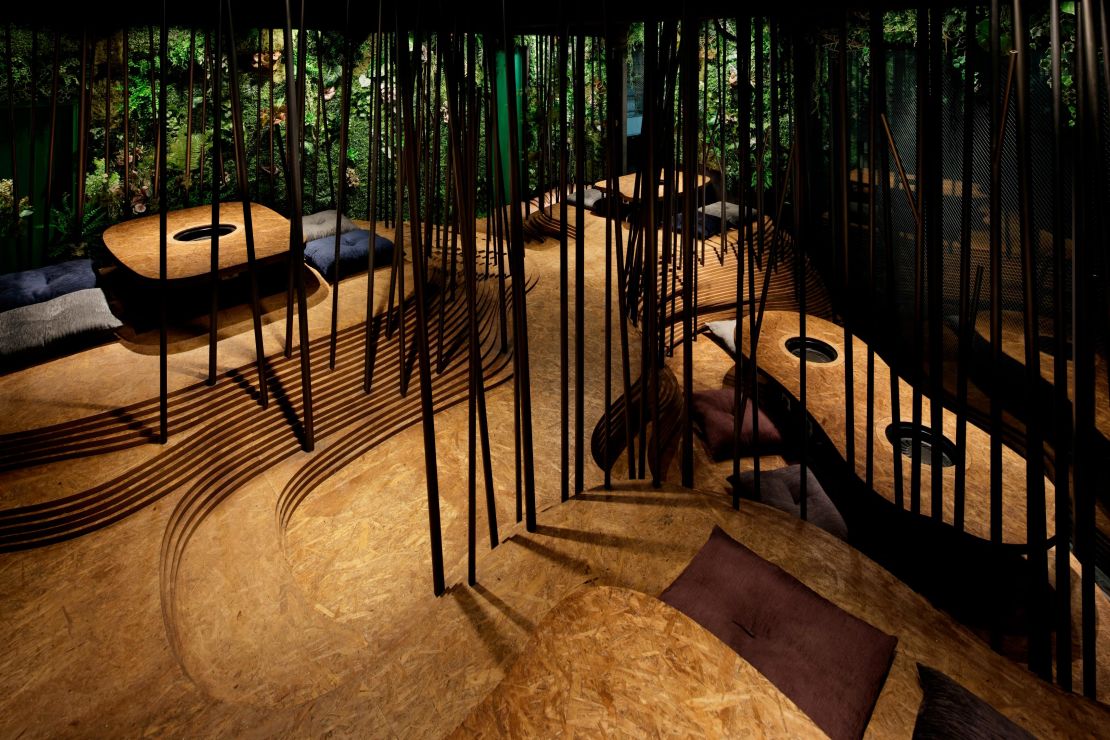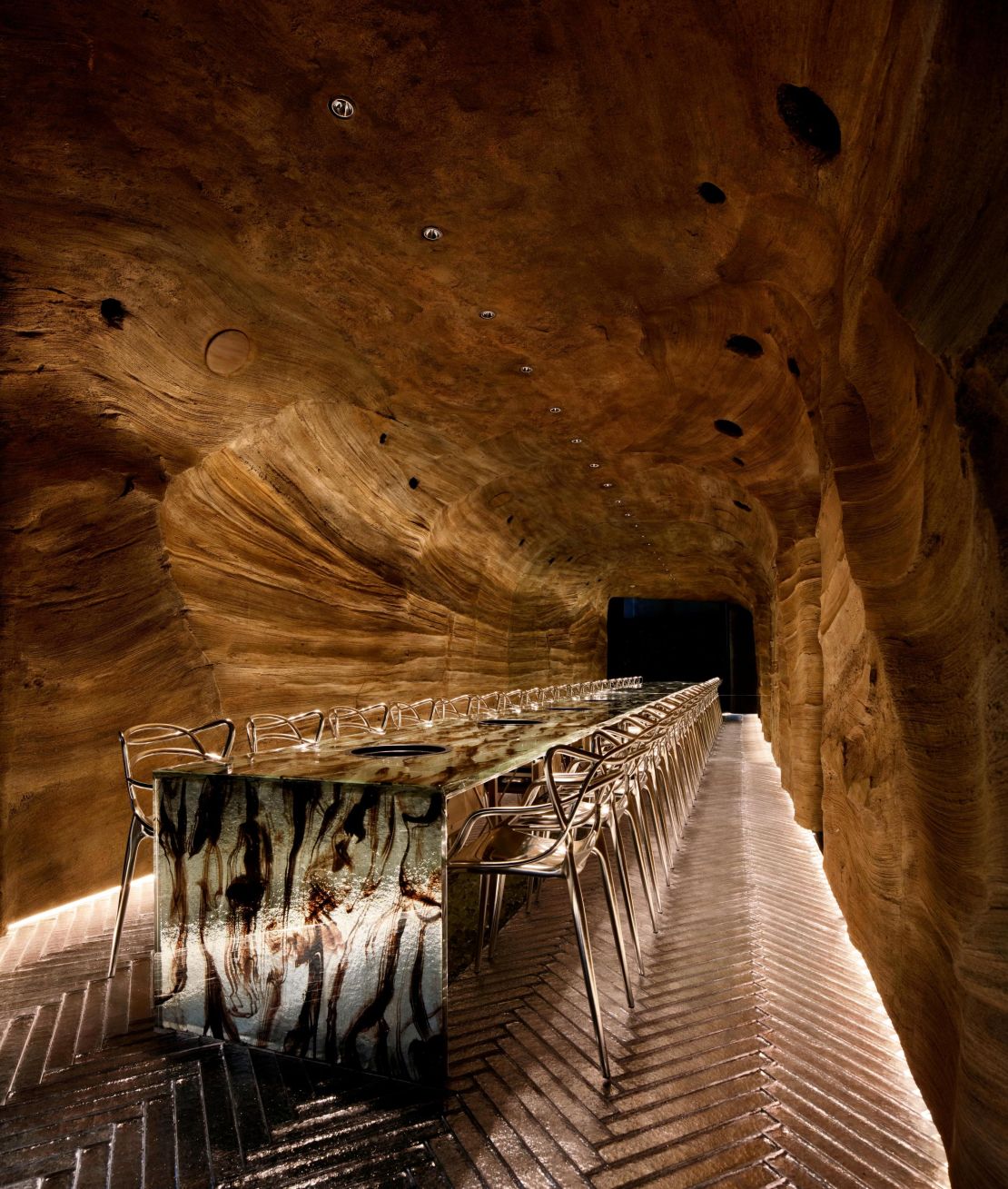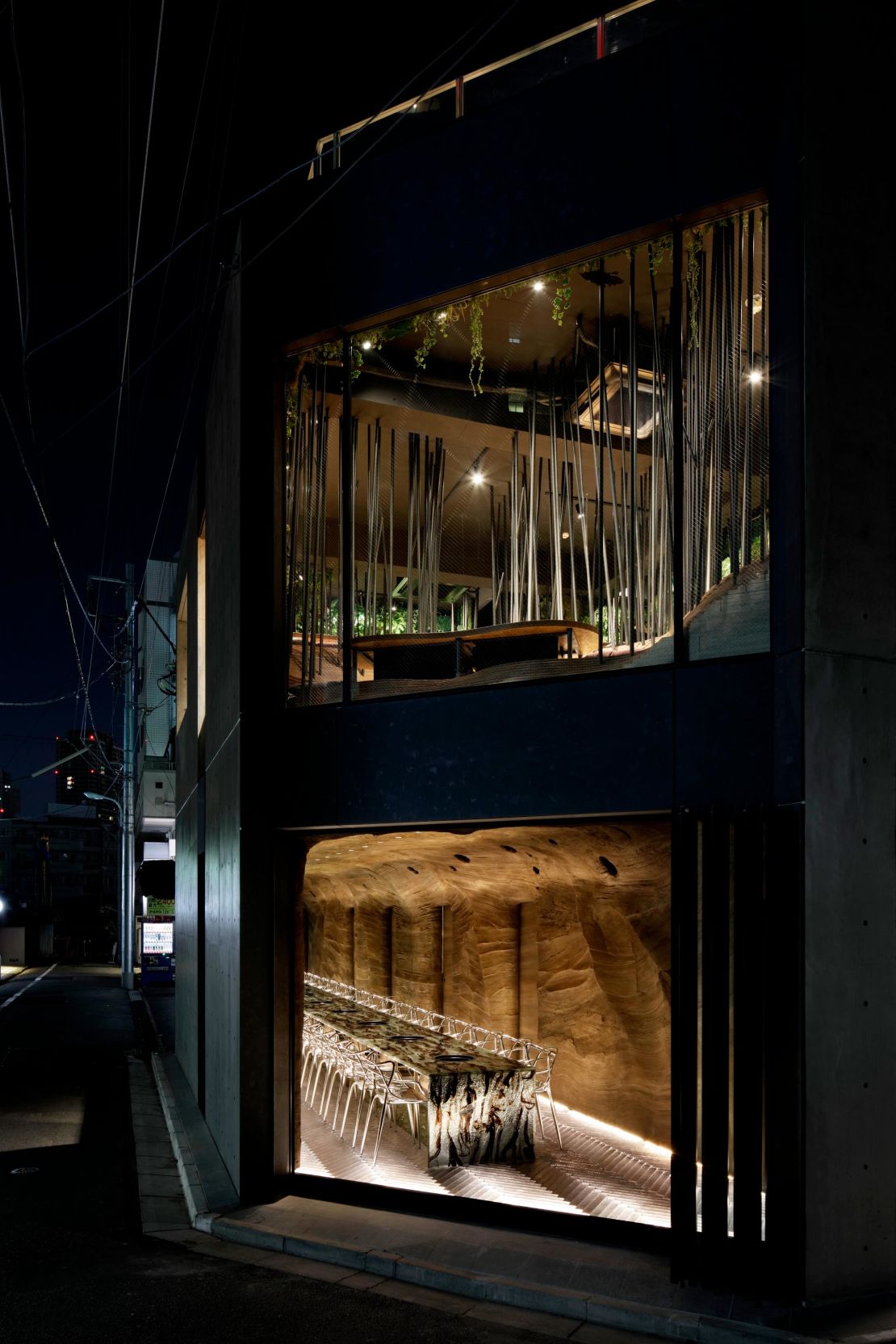Tokyo’s buzzing Roppongi district is a picture of neon-lit modernity, where glistening skyscrapers stand amid designer boutiques and late-night bars. At the two-story barbecue restaurant Nikunotoriko however, diners are encouraged to step back in time.
Inspired by prehistoric life, the two-story design comprises a cave-like ground floor and, on the upper level, a reimagined forest in which patrons sit around low tables, as if gathered around a campfire.
The contrast between the restaurant and its surroundings serves to intensify the experience of escaping the city, according to the architect behind the project, Ryoji Iedokoro.
“I was influenced by prehistoric aspects of what people used to do – cooking meat with fire and, when it was raining or cool, eating in a cave,” he said in a phone interview.
“People generally love to be in touch with nature, but that can be kind of difficult to create in busy Tokyo.”
Allusions to nature
With a name translating as “under the spell of meat,” Nikunotoriko can seat just under 50 diners at any one time. The restaurant serves mainly yakiniku, a Japanese dish of grilled meat.
Given the simple culinary concept and primeval theme, Iedokoro said the challenge was making the establishment feel classy in a city where barbecue restaurants are often, in his words, “dirty and smelly.” His solution was to use architecture and design to lure customers into a state of suspended disbelief.

In the tranquil “forest” area, this meant a contoured landscape of wooden surfaces, and walls covered in a dense layer of mock plants and greenery. Tables are divided from one another by thin steel pipes which mimic trees (and act as hooks for coats and bags).
The cavernous bottom floor offers an altogether different dining experience, complete with rock-like walls, earthy shades of brown and a long, windowless seating area.
Carefully placed spotlights and mirrors produce a sense of infinity, cutting diners off from the outside world.

Some of Iedokoro’s references to nature are subtler than others. The cave’s herringbone tiled flooring and smoked-glass table, for instance, allude to the texture of flowing water without resorting to an artificial stream.
“Replicating nature is impossible, and if you want to represent nature in a literal way, it isn’t going to work as a design,” Iedokoro said. “I wanted to create a comfortable environment that people can enjoy and that feels natural for them.”
Experience through design
The ground level’s long, 23-person table also presents Japanese customers with an unexpected cultural experience. As well as invoking a primordial sense of community, Iedokoro wanted to challenge the norms and expectations of eating out in Tokyo.

“In Japan, people want a lot of personal space,” he said. “They want their own comfort zone and to only talk with their loved ones, so they’d never expect to eat with strangers at a big table.
“But if you have separate tables you’re making ‘walls’ between different groups. We wanted to break those, and get more communication involved, with people sharing thoughts on food or whatever they’re talking about.”
Acknowledging differing preferences, Iedokoro ensured that the upper floor allows for a greater level of privacy. But regardless of how his creation is experienced, the architect’s vision is underpinned by a desire to forge unforgettable encounters through design. He encourages diners to touch and interact with the surroundings in order to fully engage their senses.
“Design is worth nothing if people forget about it,” he said.









